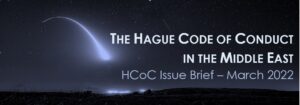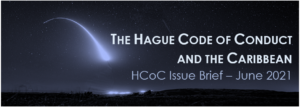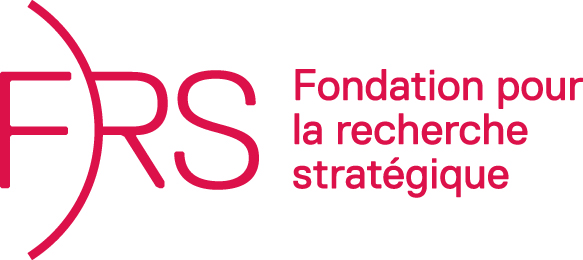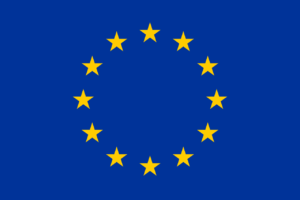Marking 20 Years of the Hague Code of Conduct FRS Side-Event in the margins of the UNGA First Committee
11 October 2022
1:15pm EDT / 7:15 pm CEST
CR11, UN HQ, and virtual

The 20th anniversary of HCoC provides the opportunity to make a further step towards the universalization of the Code through a side-event held in New York in the margins of the First Committee of the UNGA. This side-event will also promote the adoption of a new UNGA resolution in support of the Code.
AGENDA
INTRODUCTIONARY REMARKS
- Amb. Marjolijn VAN DEELEN, Special Envoy for Disarmament and Non-Proliferation, European External Action Service (EEAS), European Union
SPEAKERS
- Mr Vann VAN DIEPEN, Independent consultant, former Principal Deputy Assistant Secretary of State for International Security and Nonproliferation at the US State Department
- Ms Tiphaine JOUFFROY, Deputy Assistant-Director for Nuclear Nonproliferation and Disarmament, Ministry of Europe and Foreign Affairs, France
- Mr Gerben HAZEBROEK, Senior Policy Advisor, Nonproliferation, Disarmament and Nuclear Affairs Division, Ministry of Foreign Affairs, Netherlands
- Mr George-Wilhelm GALLHOFER, Head of Nuclear Disarmament and Non-Proliferation / Executive Secretariat of the Hague Code of Conduct, Ministry for European and International Affairs, Austria
CONCLUDING REMARKS:
- Amb. Suleiman Dauda UMAR, Ambassador and Permanent Representative of Nigeria to the International Organisations in Vienna, HCoC Chair 2022-2023
MODERATOR
- Mr Alexandre HOUDAYER, Secretary General, FRS

Summary of the event
Marking 20 Years of HCoC
On 11 October 2022, FRS, with the support of the EU, organised a side-event in New York in the margins of the First Committee of the United Nations General Assembly. The 20th anniversary of the HCoC was an opportunity to look at the genesis of the Code and to consider the motivations of its drafters and initial signatories. It is also an opportune time to look ahead and draw perspectives for the Code.
in introduction, it was noted that to mark the anniversary of the Code in a celebratory manner was impossible given the grim geopolitical situation, in Ukraine especially, but also the strains on the arms control architecture and the ongoing threat of ballistic missile proliferation. These developments affect the Code and make it all the more important to support it and continue outreach efforts. As one of the only multilateral instruments on this topic, the HCoC has succeeded in creating a forum do discuss CBMs, showing the ability of various states to work together to avoid escalatory misunderstandings. The strength of the regime depends on its flexibility to adapt to the change of curcumstances but also on its wide membership. The number of states voting in favour of UN resolutions on the Code is also a good indicator of the global support it receives.
The Genesis of the Code
The discussion aimed at recalling the conditions in which the HCoC was designed and negotiated twenty years ago. The presenter insisted on the ability of the MTCR to disturb missile programmes in the 1990s, and the fact that other programmes were interrupted during this period. But despite these successes, some programmes continued in the late 1990s and early 2000s. In some cases, the restrictions by the MTCR came too late, or countries that were not partners of the MTCR such as North Korea or China started to disseminate retro-engineered technologies. At the end of the 1990s, the dissolution of the USSR led to the increased availibility of technology and material. In parallel, proliferators workes to develop indigenous production capacities. In this context, it appeared clearly that supply-side mechanisms such as the MTCR were insufficient to curb the development of delivery vehicles able to warry WMDs. Different reports, especially in the United States, but also in EU countries, led to consider demande-side tools to curb proliferation.
The main preoccupation at the time was to avoid any instrument that would disturb the functioning of the MTCR or would be judged unacceptable for security, such as a global treaty banning the possession of ballistic missiles. States also favoured a text that would be easy to implement and would not have to face potentially controversial verification or ratification processes. The idea of a politically-binding Code of Conduct was put forward by the United Kingdom and, starting in 1999, a few European countries worked intensely with the United States to frame the outlines of the new instruments.
Within the framework of the MTCR, States tried to merge ideas to propose a single draft. Fm 2000, Russia came on board and agreed to merge the proposition of the Code with the GLobal Control System that it had initially defended.
Meetings took place in Paris in February 2002, in Madrid in June and The Hague in November, enabling the inclusion in the process of a large number of states, most of them having neither ballistic nor space capacities. The new instrument was therefore conceived as a demand-side instrument, accompanied with practical measures, with a large membership and the possibility to evolve in the future to cover a wider scope. Over time, it emerged as a norm condemning the proliferation of WMD-capable ballistic missiles and setting rules for responsible behaviour, without impeding access to space, legitimizing ballistic missile programmes or prohibiting weapons. While its inception withing the MTCR may appear unusual for a multilateral instrument, it was acctually a good forum as most indispensable stakeholders were partners of the regime at the time.
The agreed document treats non-possessors and possessors equally in a realistic way with different responsibilities for both groups, in order to avoid proliferation while refraining from prohibiting weapons. It requres transparency on “policies” and not “programmes” so that all participating states may have something to declare. It is a practical demarche which has served as a model for other initiatives such as the PSI and GICNT.
Evolutions in 20 years
After 20 years of implementation, other panelists focused on the main evolutions of the Code. It was noted that thanks to the work of the ICC (Austria), many processes have been defined to provide secure channels of communication, for instance, or to organise annual meetings. Some procedures have been refined even if some elements have been left quite open to allow for flexibility. Questions are still pending after 20 years but globally speaking, the functioning is well-established and the HCoC is now a recognised instrument in the non-proliferation and disarmament toolbox.
Supporting the Code at 20
The following presenters emphasized the evolution of ballistic missile proliferation in the last 20 years, showing specific concern for the North Korean and Iranian programmes, developped in breach of UNSC Resolutions. The proliferation of ballistic technologies to non-state actors, in particular to the Houthis, was described as particularly preoccupying.
In such as context, the HCoC contributes to international security, striking a right balance between the security concerns generated by WMD-able delivery vehicles and a willingness to draft a pragmatic instrument. It upholds the norm of non-proliferation of missiles, the principle of peaceful access to space and at the same time develops an innovative set of transparency and confidence-building measures.
As such, the Code contributes to strategic stability, especially through the pre-launch notifications and allows to limit the risk of misunderstanding and potentially miscalculations in a domain where it could have dramatic consequences. It is therefore a central pieace of the security architecture today and it is all the more important to preserve this instrument and ensure it remains effective and relevant in a context where challenges may arise, such as the ongoing dissemination of ballistic systems, the transformation of the space industry and the contestation of the international norm-based security architecture.
With this in mind, panelists noted that outreach is especially important, and a key element to achieve the universal acceptance of the Code. The number of Subscribing States increased from almost 100 at the start to 143 nowadays. But with 50 UN member states remaining outside of the Code, efforts are still necessary to encourage universalisation. Various speakers noted that the Code is more relevant than ever, especially given the fact that new technological developments may carry security risks, in particular in the space field.
The 20 years of existence of the Code have shown that although different states may share different visions, they have been able to find common ground and agree on a simple text whose requirements have been deemed acceptable for countries that have capacities and countries that do not.
This broad support is visible through the positive votes received during the adoption of biennial United Nations General Assembly resolutions. The last resolution, adopted in 2020, was supported by a record of 176 states. According to the panelists, it is essential that countries stay committed and renew this support when a new resolution is submitted to the UNGA.




